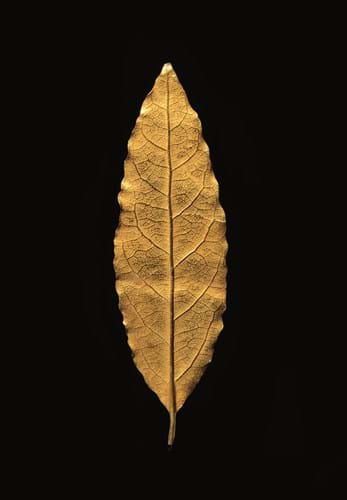
The leaf was part of the famous laurel crown worn by Napoléon at his coronation in 1804 and is featured in several well-known paintings of the occasion including Jacques-Louis David’s famous work now in the Louvre.
The gold laurel crown was created by Martin Guillaume Biennais, the goldsmith responsible for Napoléon’s coronation regalia. This little leaf, which is contained in a red morocco case signed Biennais au Singe Violet rue S Honoré No 511, has passed down through the family to his descendants who have consigned it to auction at Osenat in Fontainebleau. It will be offered in the Historic Souvenirs sale on November 19, estimated at €100,000-150,000.
Symbolic creation
Biennais’ gold crown, a symbolic creation in the style of laurel wreaths worn by Roman emperors, comprised 44 laurel leaves, 42 seeds and 12 smaller leaves. As part of the regalia it was displayed at the Notre Dame treasury until 1815, but four years later crown, sceptre, orb and the hand of justice were all melted down at the Paris Mint.
The story of the survival of this leaf, according to family tradition, is related in an article titled Les Six Feuilles d’Or published in 1958 by Jeanne-Renée de Valroger, one of Biennais’ descendants.
Biennais presented the crown to Napoléon before his coronation. “It looks beautiful, we must try it on,” said Napoléon. Biennais placed the crown gently on the emperor’s forehead as he stepped towards a mirror. “Beautiful indeed! But heavy!”
“Tis the weight of your victories Sire… many leaves are needed to recall each one.”
“In that case let us forget one or two, as I cannot bow my head beneath their burden,” was the response “Goodbye, Biennais. You have created a work that will stand the test of time.”
That evening the goldsmith returned home to his family with six small boxes in his coat pockets. Each contained a single gold leaf removed from the crown which he presented to his six daughters.
The whereabouts of the other five leaves is unknown but one other leaf, which became detached from the crown the following year, was preserved by the artist Jean-Baptiste Isabey mounted in a snuff box and is now in the Palace of Fontainebleau.





